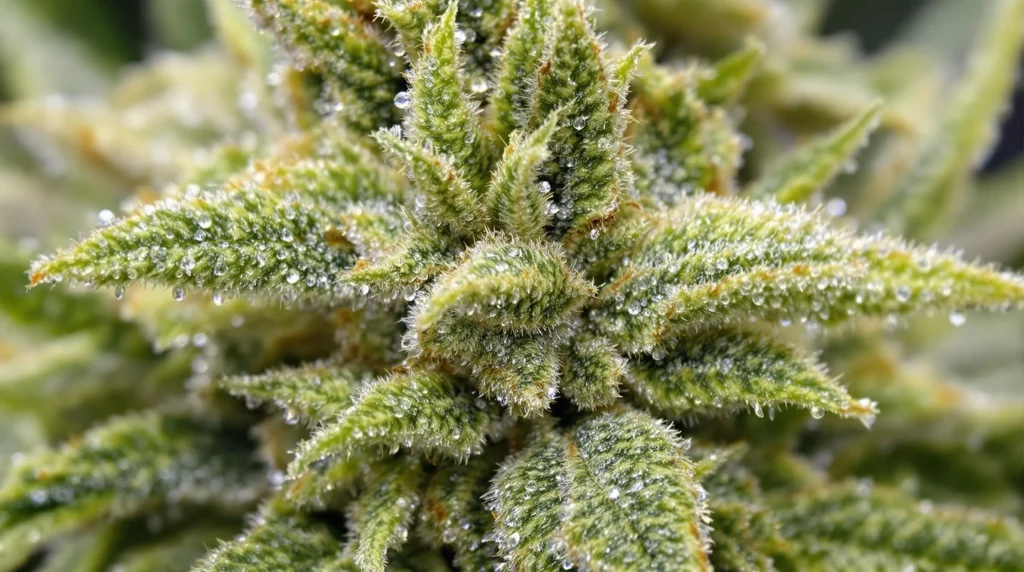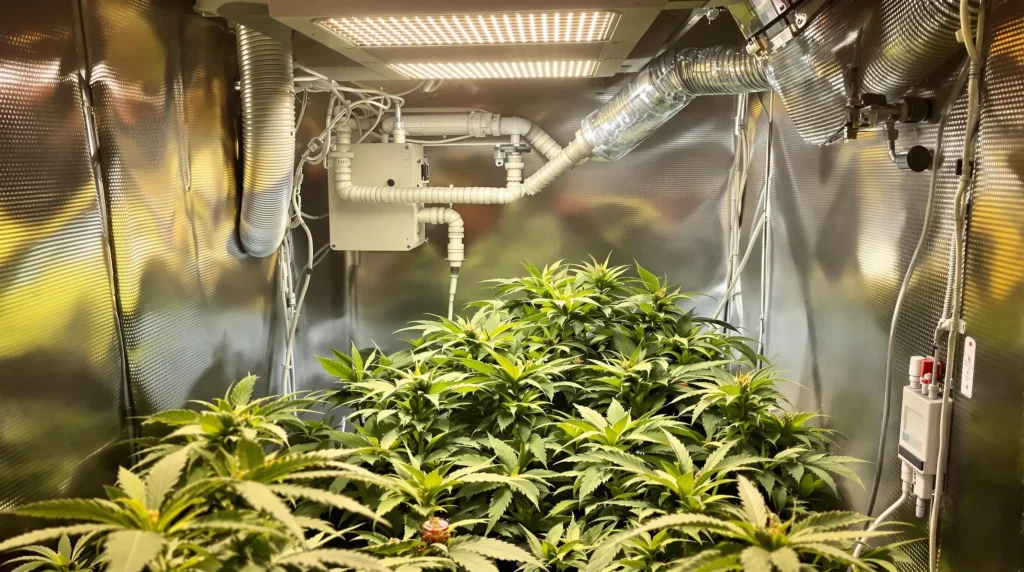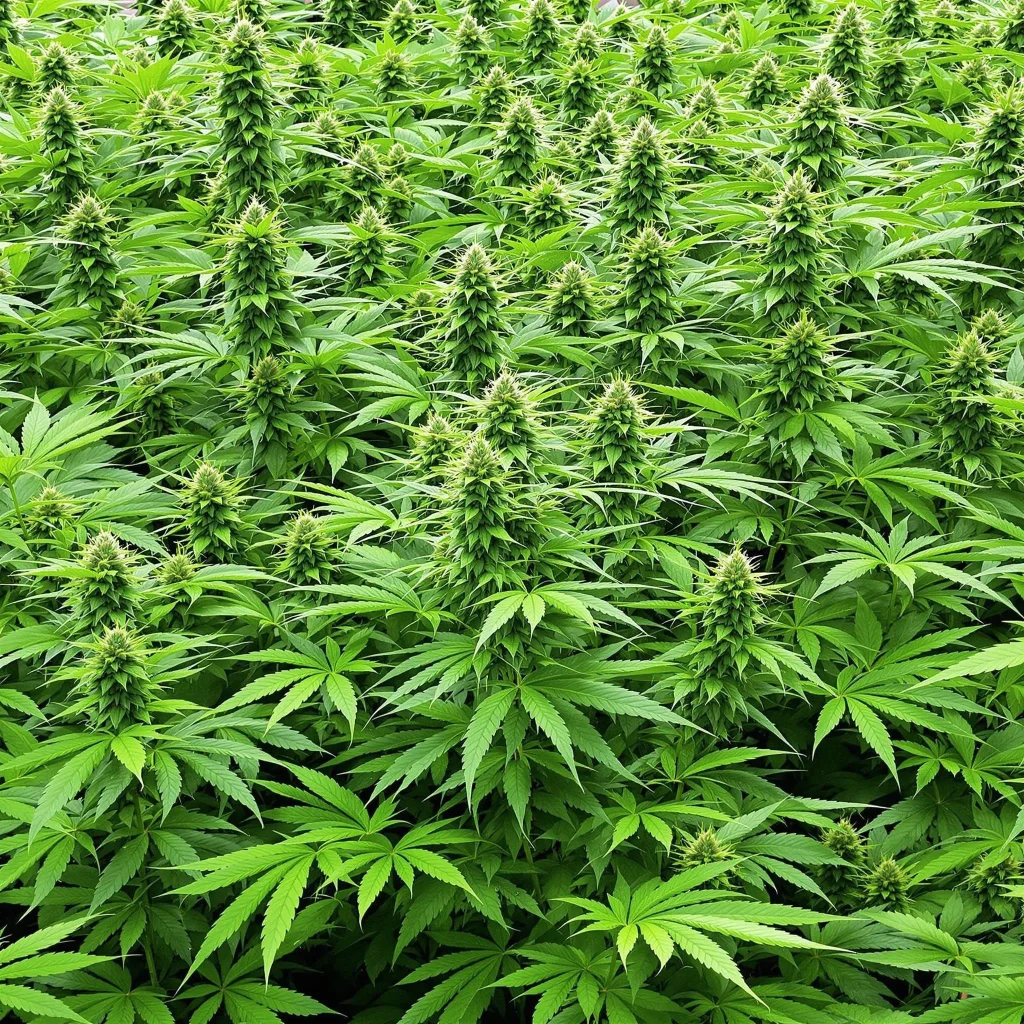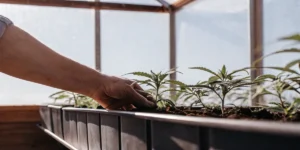Growing best cannabis plants in warm and humid climates presents both unique challenges and exciting opportunities. The right cannabis strains thrive in these environments, yielding robust plants with enhanced flavors and effects. Let’s explore the ideal cannabis varieties and cultivation techniques for such conditions.
Why Some Cannabis Strains Thrive in Warm and Humid Environments
Warm and humid climates mimic the natural habitats of many cannabis plants, such as tropical and equatorial regions. These conditions allow strains to flourish by promoting steady growth and terpene production. Strains adapted to these environments have evolved with natural resistance to heat and humidity-related stress.
Cannabis strains that thrive in these climates often have longer flowering periods and robust root systems, enabling them to absorb nutrients efficiently. They also tend to develop thick, resilient foliage that can endure extreme weather conditions, ensuring optimal growth and high yields. Additionally, the consistent moisture in humid regions supports vigorous growth, provided proper precautions are taken against mold and pests.
Key Characteristics to Look for in Heat-Resistant Strains
When selecting cannabis plants for warm and humid environments, look for strains with:
- Mold and Mildew Resistance: Strains that are less susceptible to fungal issues.
- Sativa-Dominant Genetics: These plants typically have open structures that improve airflow.
- Strong Root Systems: Essential for absorbing water and nutrients in challenging climates.
- Shorter Flowering Cycles: Faster-growing strains are less exposed to prolonged humidity risks explore our guide on fast-flowering weed seeds for a quicker harvest.
These traits ensure that your cannabis plants can withstand the challenges posed by warm and humid conditions. Furthermore, plants with naturally high resilience require less intervention, reducing the workload for growers. For detailed strain recommendations, check out our guide on the 5 Best Marijuana Strains for Hot and Humid Weather.
Top Strains for Warm and Humid Regions
Sativa-Dominant Strains Suited for Hot Climates
Durban Dew is a pure sativa that thrives in hot, humid climates. With its open structure and tall growth, it resists mold and mildew effectively. It’s ideal for daytime use, offering uplifting and energizing effects. Durban Dew also boasts a robust genetic lineage that ensures reliable performance in tropical environments.
Maui Waui is another excellent choice, originating from tropical Hawaii. This strain loves warm conditions and produces sweet, fruity buds with stress-relieving properties. Its adaptability makes it suitable for both novice and experienced growers looking to capitalize on warm climates.
Hybrid Strains with High Resistance to Humidity
Blue Dream, a balanced hybrid, combines the best of sativa and indica traits. Its resilience and high yields make it a favorite among growers in humid climates. Blue Dream’s ability to withstand challenging conditions ensures consistent performance and abundant harvests.
Gorilla Glue #4 is renowned for its ability to withstand mold, producing dense, resinous buds even in high humidity. Its sticky trichome production and potent effects make it a standout choice for humid regions.
Autoflowering Strains for Quick and Resilient Growth
Northern Lights Auto is a compact strain that performs well in humid environments due to its rapid growth and strong resistance to pests and diseases. Its short life cycle reduces exposure to prolonged humidity-related risks.
Amnesia Haze Auto flourishes in warm climates, offering a citrusy flavor profile and an uplifting high while minimizing humidity-related risks. This strain is particularly suited for growers seeking quick, rewarding harvests in challenging conditions.
Environmental Challenges in Warm and Humid Climates
Preventing Mold and Mildew in High Humidity
Mold and mildew are significant concerns in humid climates. To combat this, ensure proper airflow by spacing plants adequately and using oscillating fans. Opt for strains bred for mold resistance and regularly inspect plants for early signs of fungal growth. Implementing preventative measures like pruning lower branches and avoiding excessive watering can also help.
Managing Heat Stress in Cannabis Plants
Heat stress can cause wilting, leaf curling, and reduced yields. Protect your plants by shading them during peak sunlight hours and watering them consistently to maintain hydration. Mulching around the base helps retain soil moisture, keeping roots cool. Additionally, using light-colored pots or reflective materials can reduce heat absorption and create a more stable growing environment.
For even more detailed strategies on managing high temperatures and optimizing your garden during the warm season, check out our Easy Summer Weed Growing Guide
Growing Techniques for Warm and Humid Climates
Choosing the Right Soil and Nutrients
Well-draining soil is essential for preventing waterlogging in humid climates. Adding organic matter such as compost or aged manure improves soil structure and promotes nutrient retention. These amendments also support beneficial microbial activity, fostering healthy root development and overall plant vitality.
Perlite and coco coir can further enhance aeration and drainage, reducing the risk of root rot. Fertilizers high in potassium and phosphorus during the flowering stage help cannabis plants produce dense buds. Ensuring balanced nutrient levels throughout the growth cycle leads to robust yields, earn more about choosing the best growing medium for your cannabis plants.
Proper Air Circulation to Combat Humidity
Maintaining air circulation is crucial in humid climates to prevent mold and mildew. Indoor setups benefit from oscillating fans that create consistent airflow, while outdoor growers should prune lower branches to encourage natural ventilation. Good airflow minimizes humidity pockets around the foliage.
Spacing plants adequately allows air to move freely, reducing the likelihood of fungal infections. Regularly cleaning fans and other equipment helps prevent bacteria and moisture buildup, creating a healthier growing environment.

Shading and Cooling Techniques for Hot Weather
Shade cloths are highly effective for protecting plants from excessive sunlight. They provide relief during the hottest parts of the day without sacrificing necessary light exposure. Choosing the right density of shade cloth ensures plants receive optimal light for photosynthesis.
Cooling methods, such as misting plants lightly or installing drip irrigation systems, help combat heat stress. These techniques maintain stable temperatures and prevent dehydration. Properly timed cooling practices can significantly improve plant resilience.
Benefits of Growing Cannabis in Warm and Humid Climates
Longer Growing Seasons for Extended Yields
Warm climates often provide extended growing seasons, allowing multiple harvests per year. This advantage enables cultivators to experiment with various strains and refine their growing techniques. The longer season also supports the full maturation of slower-developing strains.
Prolonged warmth fosters consistent growth, leading to vigorous plants and abundant yields. This extended timeline allows growers to maximize productivity and profitability, making warm climates highly desirable for cannabis cultivation.
Enhanced Terpene and Cannabinoid Profiles
The steady warmth and ample sunlight of warm climates boost terpene production, enriching the flavor and aroma profiles of cannabis strains. These conditions also enhance cannabinoid levels, producing potent and desirable flowers for both recreational and medicinal use. Unique environmental factors in warm climates contribute to distinct terpene combinations, giving cannabis grown in these regions a signature quality. This heightened profile appeals to consumers seeking premium products.
Common Mistakes to Avoid
Overwatering in Humid Conditions
Overwatering is a common mistake in humid climates, often leading to root rot and other fungal diseases. Allowing the top layer of soil to dry out between watering sessions helps mitigate these risks. Monitoring soil moisture with a probe or by touch ensures appropriate hydration.
Using well-draining pots and soil mixes minimizes the chances of waterlogging. Adjusting watering schedules to align with daily humidity levels keeps plants healthy and reduces unnecessary stress.
Using Non-Resistant Strains in Challenging Climates
Selecting strains that lack resistance to mold and heat can result in crop failure. Opting for heat-tolerant and mold-resistant strains ensures plants thrive under challenging conditions. Researching strain genetics before planting is a worthwhile investment.
Choosing appropriate strains saves time, effort, and resources by reducing susceptibility to environmental stressors. Resistant varieties are specifically bred to handle the demands of warm and humid climates, ensuring better outcomes.

FAQs About Cannabis Plants for Warm and Humid Climates
Which cannabis strain is best for hot and humid regions?
Strains like Durban Poison, Blue Dream, and Northern Lights Auto are excellent for warm and humid climates. These varieties are naturally resilient, thriving in challenging environments. Their robust genetics allow them to withstand high temperatures and humidity while maintaining strong growth and high yields. Selecting such strains provides growers with a reliable foundation for successful harvests.
How do I protect my plants from mold and mildew in humidity?
Ensure proper airflow by spacing plants adequately and using fans or pruning techniques to increase ventilation. Choosing mold-resistant strains and applying organic fungicides further reduces the risk of fungal infections. Regular monitoring and early intervention are critical to managing mold and mildew. Proactive measures, such as maintaining cleanliness and avoiding overwatering, help ensure healthy plants in humid climates.
Can I grow cannabis outdoors in tropical climates?
Yes, many cannabis strains thrive in tropical climates. Selecting heat-tolerant and mold-resistant strains is key. Implementing effective pest control and disease management practices supports optimal plant health. Tropical climates offer abundant sunlight and consistent warmth, providing ideal conditions for cannabis cultivation. With the right strategies, outdoor growers can achieve exceptional yields in these regions.





